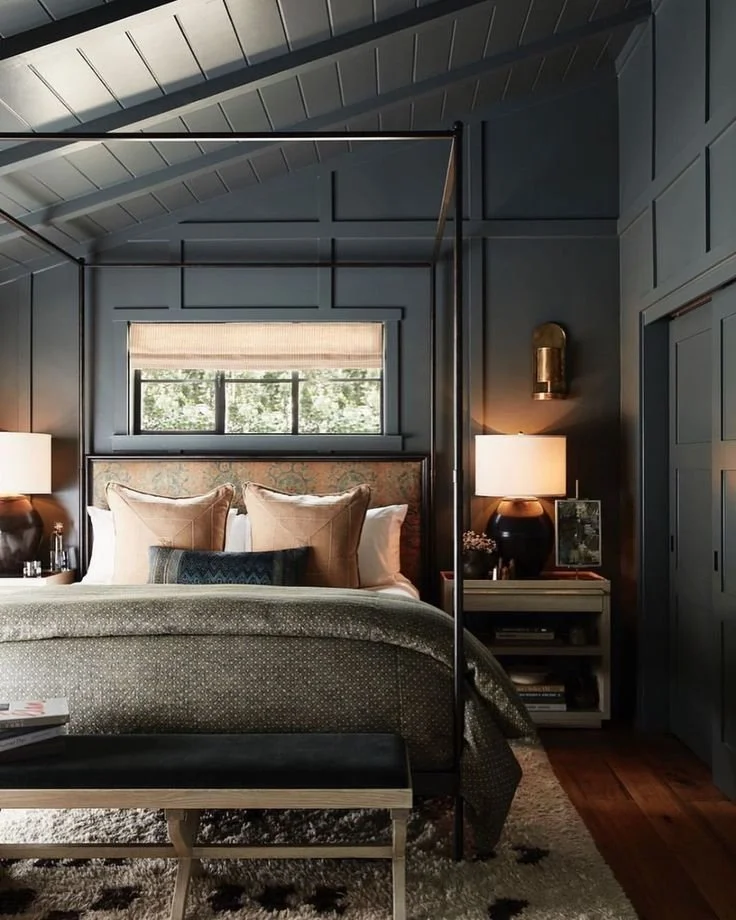EXCLUSIVE CONTENT
Complimentary Content and Design Support for Instagram Followers!
YOUR DESIGNER
Paige Gray, BA ID
Painting a Space Lighter: Maximizing Perception of Space
Using light colours in small rooms can create the illusion of a larger, airier space. Lighter shades reflect more natural light, which can make a small room feel brighter and more open.
Key Benefits of Light Colours:
Reflects Light: Lighter tones, especially whites, off-whites, pastels, and soft neutrals, reflect light around the room. This makes the space feel more expansive and less enclosed.
Expands Visual Boundaries: Pale colours on walls and ceilings can trick the eye into perceiving the space as larger, as it reduces visual barriers.
Creates a Calm, Open Vibe: Soft shades give the room a more serene and expansive atmosphere, which is perfect for small spaces that need a sense of tranquility.
Best Colors for Small Spaces:
Soft whites, off-whites, and light beiges
Soft pastels like pale blue, lavender, or mint
Light greys or greige (a combination of grey and beige)
Design Tip: When using light colours, consider using them across all surfaces—walls, ceiling, and trim—to create a seamless flow. A continuous palette reduces visual interruptions and maximizes the feeling of openness.
Painting a Space Darker: Creating Intimacy and Depth
While darker colours are often avoided in small spaces for fear they might make the room feel more cramped, the right use of deep tones can actually create a sense of depth and make a space feel more expansive in a cozy, intimate way.
Key Benefits of Dark Colours:
Adds Depth and Dimension: Darker colours can create a sense of visual depth, which draws the eye outward, creating the illusion of more space in a three-dimensional way.
Highlights Architectural Features: Dark tones can emphasize structural details like mouldings, windows, or built-ins, adding character to a small space without making it feel crowded.
Creates Cozy Atmosphere: Darker shades, like deep navy, charcoal, and forest green, make a room feel inviting and cozy, creating an intimate retreat.
Best Colors for Small Spaces:
Navy blue, charcoal grey, deep green, and rich plum
Moody tones of charcoal, indigo, or earthy browns
Darker hues of jewel tones like emerald or deep burgundy
Design Tip: To make dark colours work in a small room, balance the intensity with natural light or use accent lighting to avoid the space feeling too heavy. You can also keep one wall darker (like an accent wall) while the others remain lighter to prevent the room from feeling boxed in.
Colour Washing (Colour Drenching): Creating Seamless Flow and Height
Colour washing, or colour drenching, involves using the same colour across the walls, trim, ceiling, and sometimes even millwork, creating a sense of seamlessness and unity. This technique works especially well in small rooms by visually expanding the space and enhancing the flow between different surfaces.
Key Benefits of Colour Washing:
Unifies the Space: By enveloping the entire room in one colour, you remove harsh boundaries and allow the room to feel continuous, which creates the illusion of more space.
Expands Vertical Space: When the walls and ceiling are painted the same colour, especially in a light hue, it can help create the perception of height, making the room feel less constrained.
Adds Softness and Flow: Colour washing creates a smooth, soft transition between surfaces, adding a sense of calm and understated elegance to the space.
Best Colors for Colour Washing:
Soft neutrals or deep hues, this technique is astonishingly universal in its impact
Muted tones of soft greens, blues, or earthy shades like taupe or terracotta
Shades that complement the room’s natural lighting—think warm greys, dusty pinks, or pale mustard
Design Tip: To add interest to a colour-washed room without disrupting its flow, you can vary the tone slightly (darker on the lower half, lighter on the upper half) or use varying finishes like matte on the walls and a glossy finish on the trim or ceiling. This helps create depth and texture.




